Approximately 700km northeast of Sydney and 700km southeast of Brisbane in the Tasman Sea, you will find one of the most picturesque and beautiful islands in Australia, if not the world – Lord Howe Island. Jayne Jenkins paid a visit.
Photographs by Jayne Jenkins
Lord Howe Island, one of Australasia’s best-kept secrets, is so beautiful and unique that in 1982, it was awarded a World Heritage listing, one of only four such islands in the world.
The island was discovered by the crew of the HMS Supply in 1788 while enroute to delivering a load of convicts to Norfolk Island from Australia to set up a penal colony.
The waters that surround the island (up to 12 nautical miles offshore) have been declared a marine park. Recreational fishing is strictly regulated, everything is protected so the richness of marine life at Lord Howe Island will continue for the next generations to enjoy.
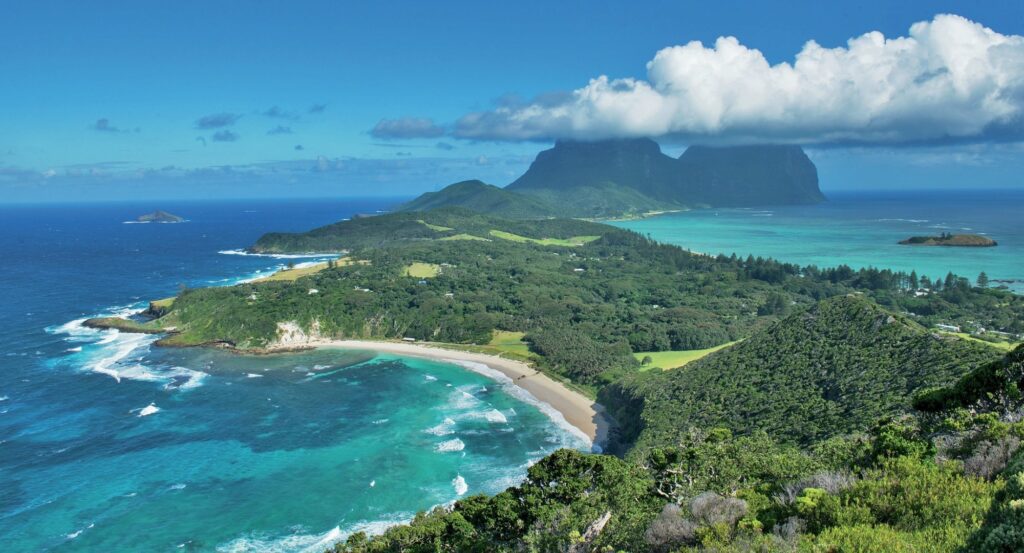
Just over a two-hour flight from Sydney, the views on approach to the island are spectacular. Flying in over the turquoise blue lagoon with Mount Gower and Lidgebird to your right is breathtaking. Every time I fly there, I think of the old TV series, Fantasy Island, and the cry of ‘the plane, the plane’.
On landing, once the aircraft door is opened, a friendly airport staff local comes aboard to welcome you, then a short stroll to the terminal and your accommodation hosts are at the ready to whisk you away. Being a domestic flight (as Lord Howe Island is part of NSW) and small aircraft, there are no queues or hassles, and the warm and friendly faces make you feel extremely welcome before even leaving the airport. There are numerous styles of accommodation on the crescent-shaped island ranging from moderate lodges to five-star luxury. Most resorts and lodges are set in beautiful gardens and the sound of birds and rustling of palms is immediately relaxing.
With only 500 permanent residents and a maximum of 400 visitors permitted on the island at any time, Lord Howe is a very a peaceful place. The most popular means of transport is either by foot or pedal power, with plenty of bicycles for hire as there are very few cars. There is no mobile phone reception and limited wi-fi available at some resorts and the museum café.
At 31° 33’S, Lord Howe Island has the southernmost coral reefs in the world. Fed by sea currents from the Great Barrier Reef, New Caledonia, and New Zealand, the diving is magical. Often called the ‘Galapagos of Australia’, the uniqueness of Lord Howe is the merging of warm and cold currents providing both tropical and temperate marine life in one area. Driven by the trade winds, the Pacific South Equatorial Current moves westward across the equator. When it reaches the northeast coast of Australia – and the Great Barrier Reef – it is diverted south, becoming the East Australian Current, bringing warm surface waters, fish and invertebrate eggs and larvae down to Lord Howe Island.
Did you know?
The only way to get to Lord Howe Island is with a two hour flight from Sydney. Flights depart daily, and there are connecting flights from all Australian capital cities. There’s a limit of 400 tourists on the island at any one time, so make sure you have confirmed accommodation before arranging your travel/flights.
Being so far out in the ocean you are not plagued by rivers clouding the waters or land degradation. The island is so far off the coast, visibility is usually 30 metres or more and brags over 500 recorded species of fish and 90 different coral species. With the lagoon protected, there is always somewhere to dive, and dives are very rarely cancelled. Offering an incredible diversity, you will soon discover all dives sites are special and boat rides range from ten minutes to the longer hour or so to Ball’s Pyramid.
Ball’s Pyramid is a basalt rock jutting 550 metres out of the ocean. The pyramid is 23km south of Lord Howe Island and the tallest sea pinnacle in the world. It is also one of a series of volcanic pinnacles formed from a massive eruption millions of years ago. Rugged and inhospitable, Ball’s Pyramid can only be viewed by boat or scenic flight. In 2001, it hit headlines when biologists found several Lord Howe Island stick insects (Fazmids) on the pyramid, a species that had not been sighted on the main island for 80 years. Biologists were amazed at how a flightless insect had managed to make its way 23km across the ocean.

For diving on Lord Howe Island, Dive Lord Howe is the only dive company offering a professional but relaxed operation. It has been a family run business since 2013. Aaron (owner/operator, previously Pro Dive Lord Howe) first sailed to the island in 2007 and took his first breaths underwater there in 2008. From snowboarder to dive instructor, he purchased the business in 2013 so has been living and diving on the island for many years. His knowledge of both marine and island life will keep you enthralled for hours. The dive shop, with its stunning views, is on the beach and the dive boat is moored on the lagoon an easy stroll away. Most resorts will transport you there for your dive days.
There are so many dive sites at Lord Howe Island, it would be too hard to mention all. A few of Aaron’s favourite dives are North Rocks, Gower Pinnacle, The Triangle and always Ball’s Pyramid, and just a few of mine are North Rocks and again Ball’s Pyramid.
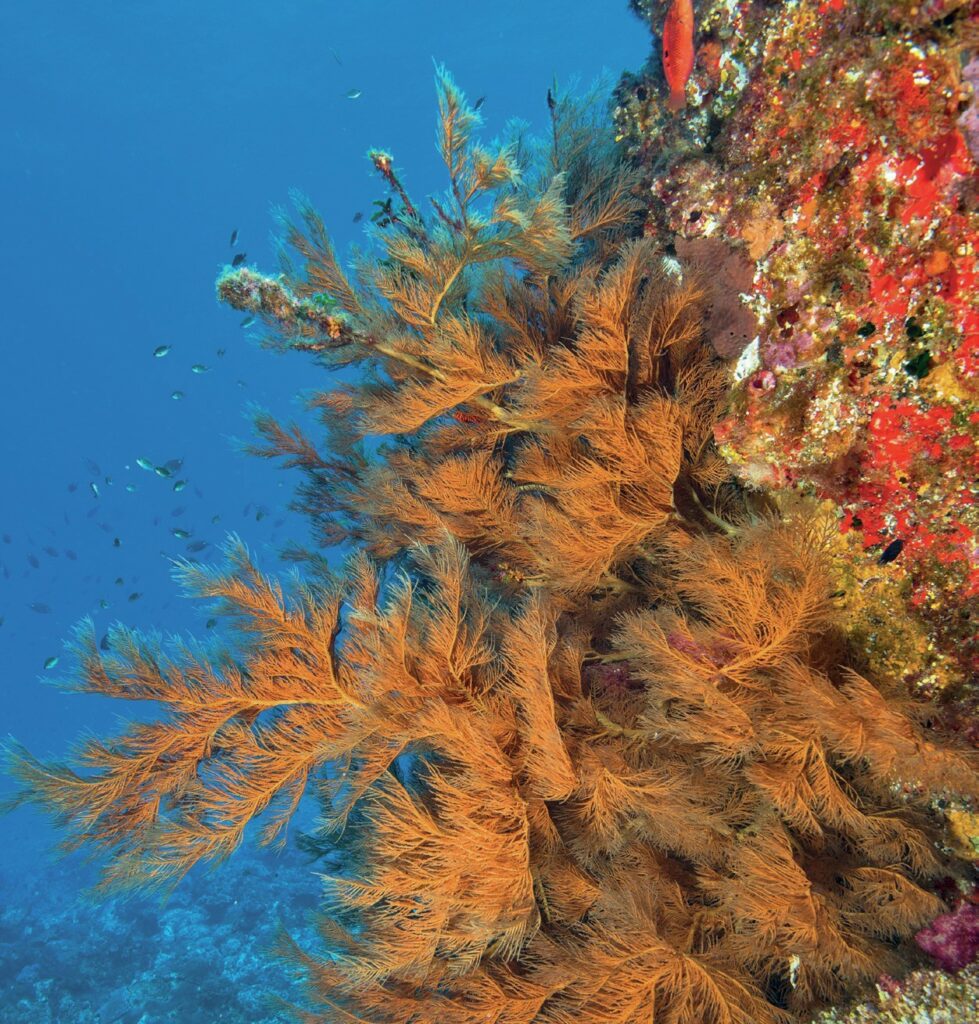
If the seas are not favourable for some of the outer reef dive sites, inside the lagoon is also great diving. Erscott’s Hole or Comet’s are marine sanctuary areas and can keep you amazed for hours and are a photographers’ delight, with the variety of marine life. Comet’s Hole is a hole that is swarming with marine life. A depth of 7-8m, it is a must-do dive for underwater photographers.
Here is where you will find the endemic Mc Culloch’s anemonefish, large schools of lined catfish, decorator crabs, coral gobies, white-mouthed moray, slipper crayfish, trevally, painted morwong, silver drummer, three-striped butterflyfish, three types of lionfish, the Lord Howe Island moray eel, and marble shrimp. There are numerous corals in Comet’s Hole such as porites, acropora in large numbers and needle corals.
Bigger fish like bull rays, long-tailed whip ray and Galapagos whaler sharks also cruise along the reef edge.
The Admiralty Islands are a longer boat ride away but offer a variety of diving. Generally, there is a surface interval at Ned’s Beach – famous for its fish feeding – where you can jump in for a snorkel or just relax.
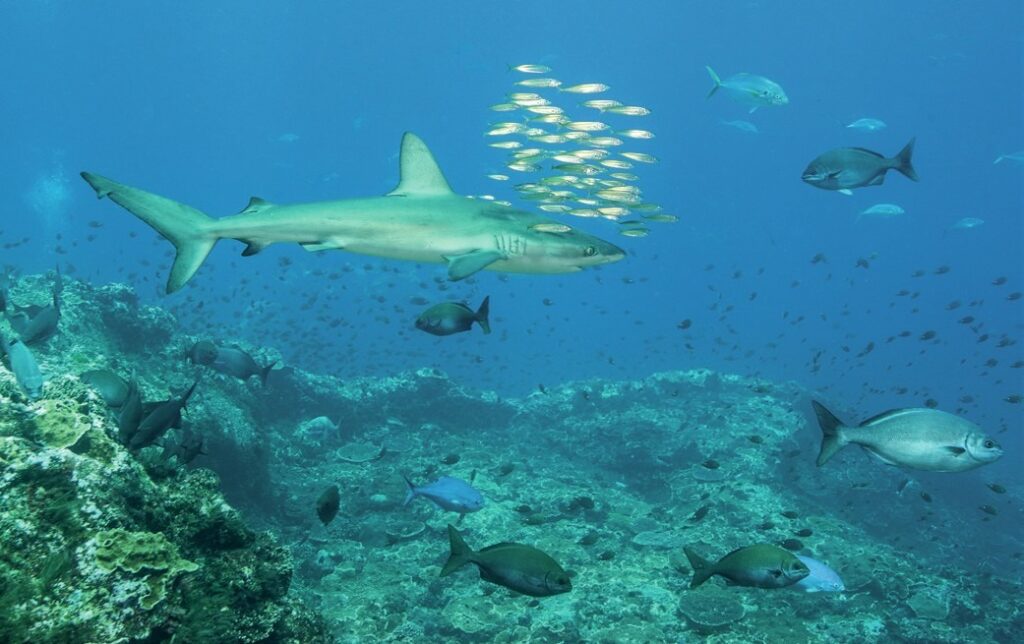
Rupert’s Reef
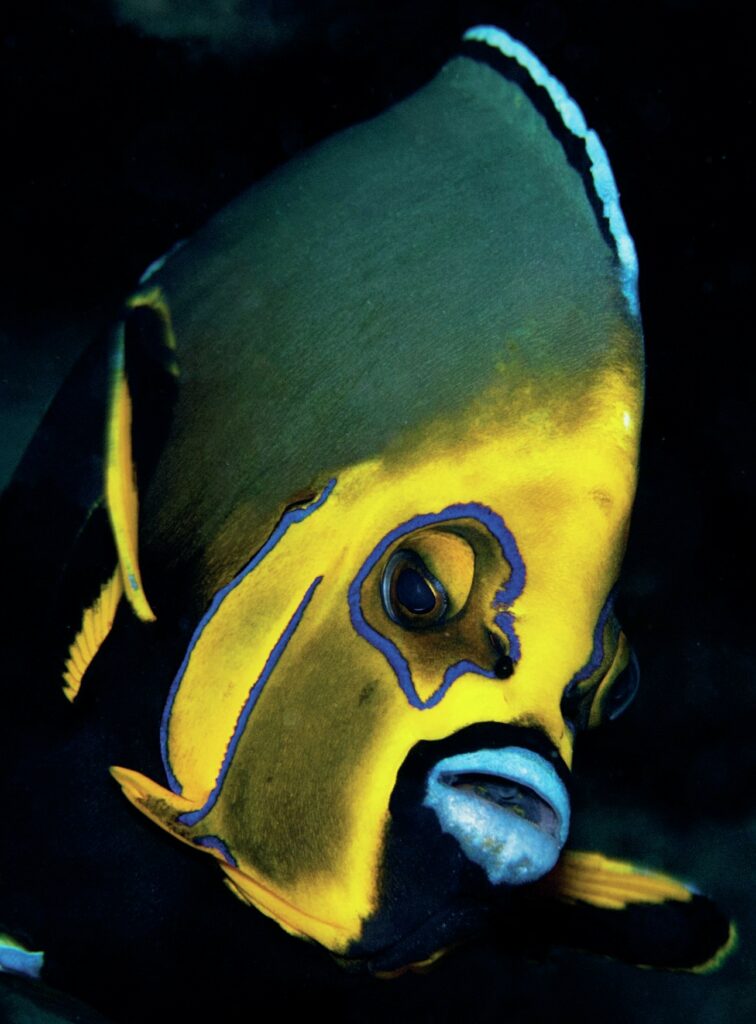
Named after one of Lord Howe’s original local divers who pioneered diving on the island. Rupert’s Reef is in the channel between No-Name Rock and Roach Island. There is a resident green turtle, lots of small sea fans, purple and orange bryozoans., and you can find small squat lobster and grey coral gobies in the hard corals if you have keen eyesight. There are also saddled rock cod, and occasionally large painted crayfish.
10th June
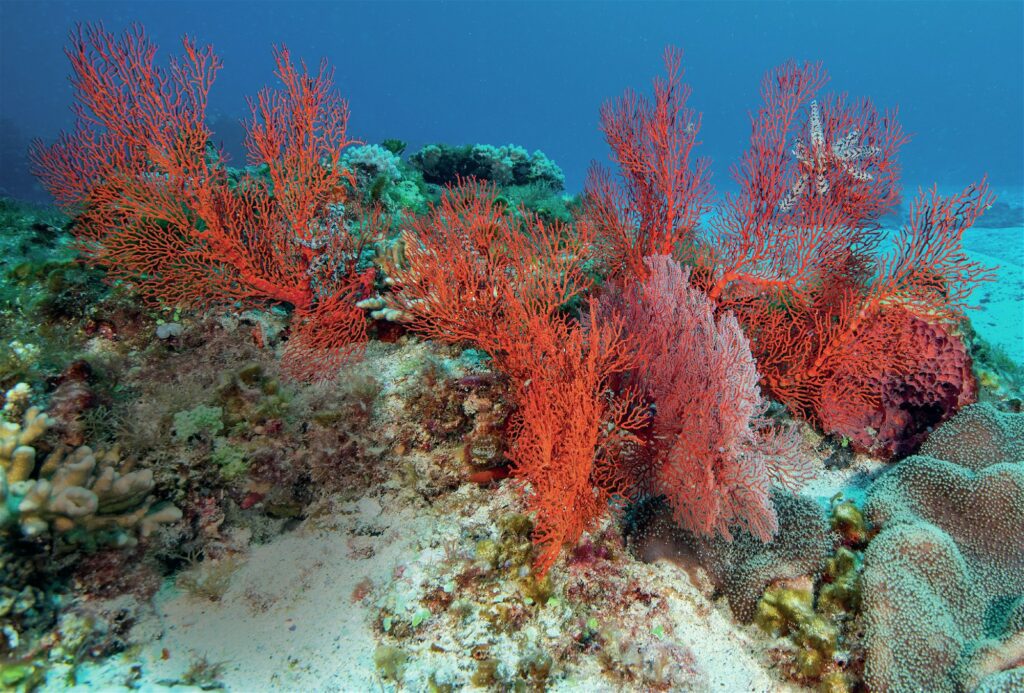
This site is a reef that forms a smaller pinnacle coming close to the surface. There is such a variety on this site, with Japanese boarfish always seeming to be there. One side of the reef has great sea fans and gutters with many pelagic fish such as trevally and drummers.
At the end of the dive, slowly make your way up the pinnacle where smaller marine life hides out such as great nudibranchs, egg cowries and often a Spanish dancer.
North Rock
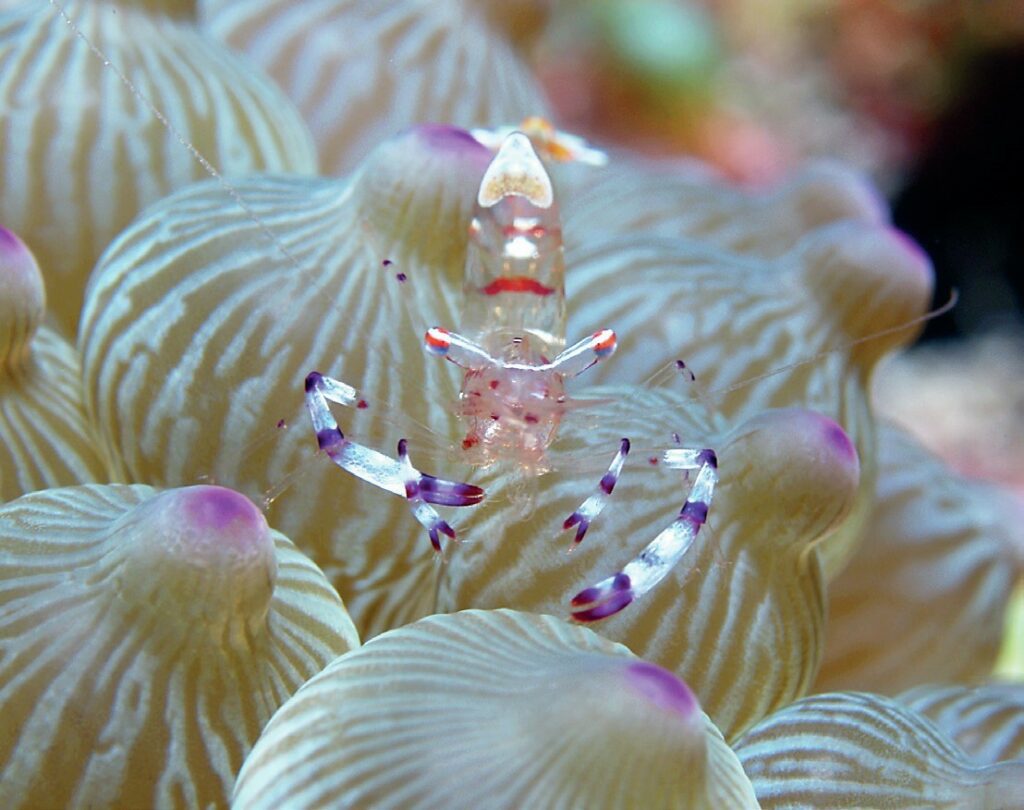
This is a favourite dive of many divers. Slightly more exposed and can have small swell, it is well worth it. With tunnels and cracks carved through the fringing reef plus a great wall in slightly deeper water, this is where there are black coral trees and beautiful soft corals, with plenty of pelagic fish. Galapagos whalers are often seen here along with spangled emperors, sweep, kingfish and trevally. A very exciting dive site.
Deacon’s Delight
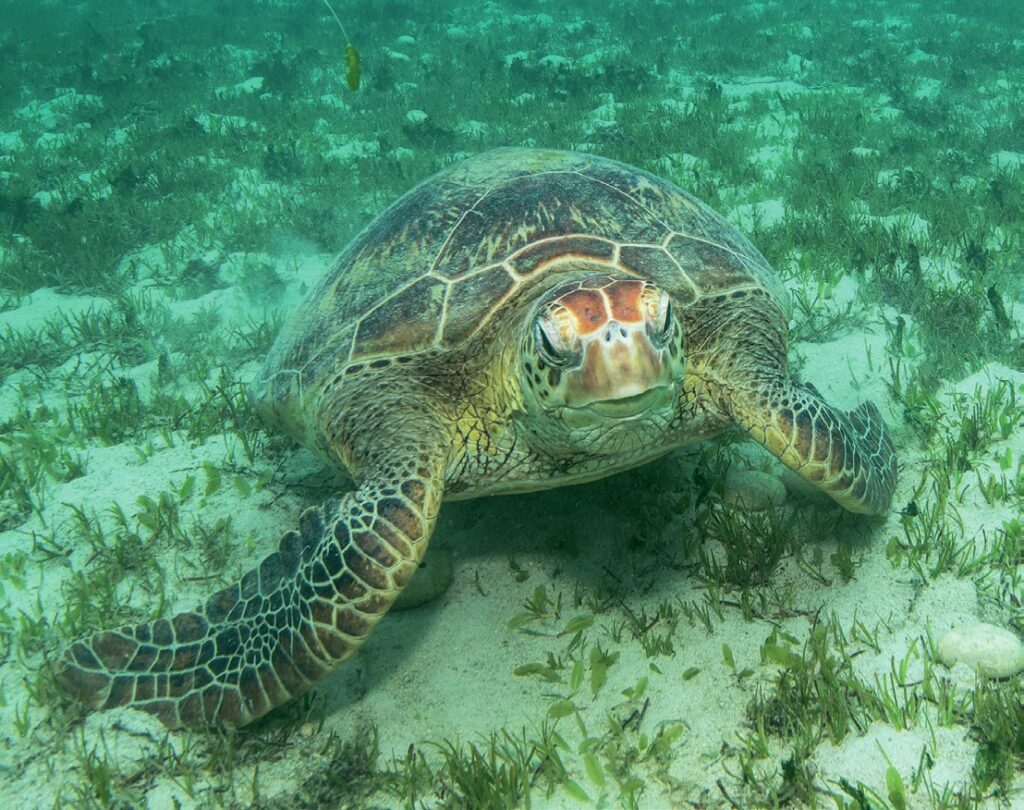
This is a reef in 22m of water and discovered in 2008 by Jeff Deacon on his way back from a fishing trip. Here experience Galapagos reef shark, schools of blue streak fusiliers, trevally, kingfish, a variety of butterflyfish, clown triggerfish and the rare harlequin tuskfish. I was lucky enough to be on the boat with Jeff one dive and we saw a tiger shark at this reef. Add to this swim-throughs with carpets of soft purple corals to make it a brilliant dive.
Ball’s Pyramid
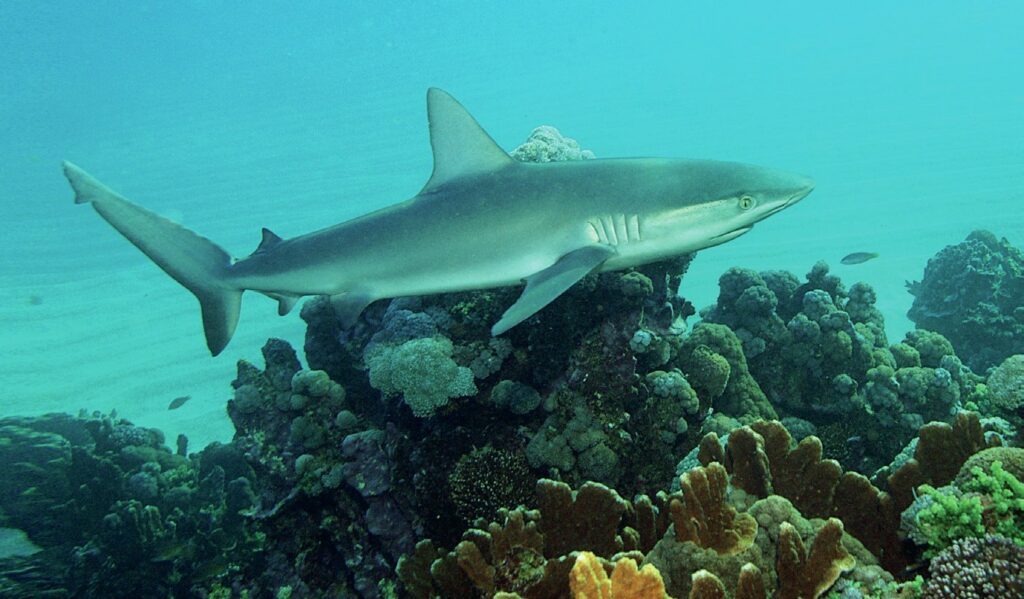
Lord Howe Islands’ premier dive site is Ball’s Pyramid. Approaching this spectacular site is worth the boat ride, just seeing this giant formation sticking out of the ocean, making you think Batman could fly in and out. Not only is it spectacular from above but below the surface, marine life there is just buzzing.
When diving Ball’s Pyramid and its neighbouring sites, you can expect gin-clear visibility and massive schools of violet sweep, amberjack, kingfish, rainbow runners, trevally and silver drummer, an occasional marlin, dolphins and wahoo can sometimes be seen, and it has been known to see whalesharks on the trip to the pyramid. If you are lucky, you may also spot the ballina angelfish (usually known to be in very deep waters) or a manta ray.
The dive sites average 25m in depth and range from drift, cave dives or simply following a coral wall. Between dives, the dolphins seem to know the boat is there and a snorkel and play makes for the perfect surface interval.
There are numerous dive sites that surround Lord Howe Island. All are excellent but far too many to mention and experience in one trip
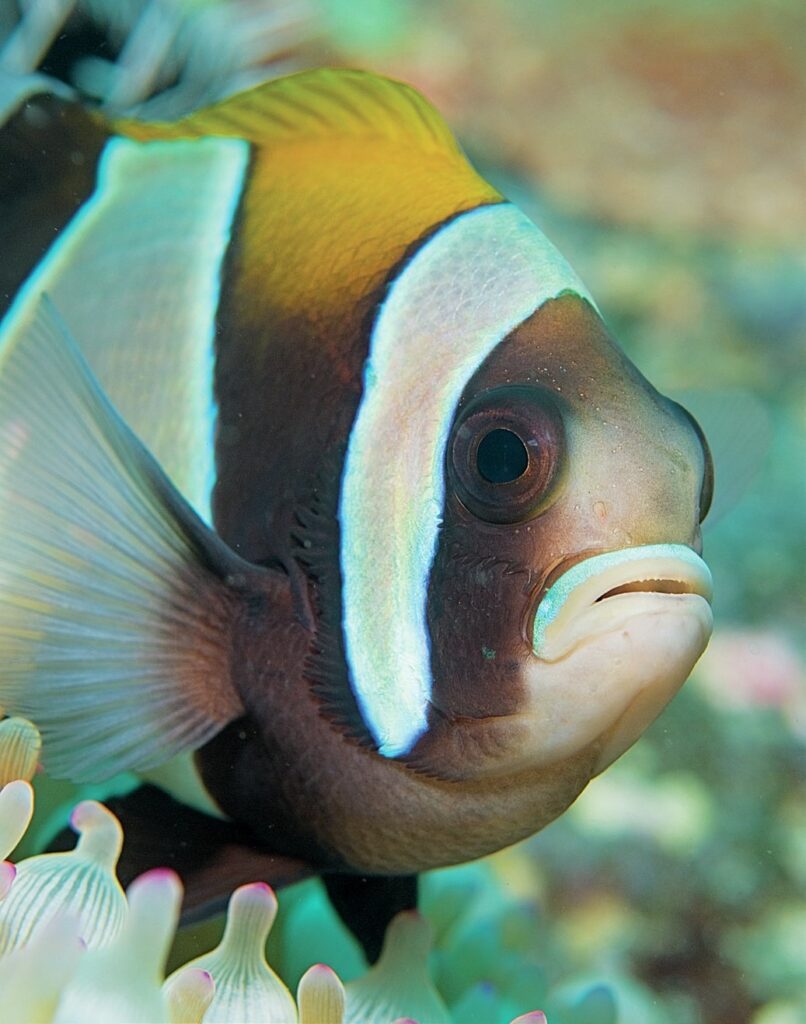
Summary
Lord Howe is not just for divers as family members can enjoy the beautiful walks, surfing and snorkels around the island, plus dive courses are also available. Old Settlement Beach is a great place for snorkelling with turtles and Ned’s Beach has a great channel for shore diving, snorkelling plus a great place for night dives and seeing a Spanish dancer. Do yourself a favour and experience it for yourself.
This article was originally published in Scuba Diver ANZ #55.
Subscribe digitally and read more great stories like this from anywhere in the world in a mobile-friendly format. Link to the article
